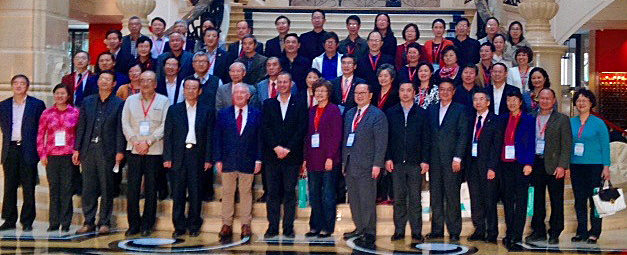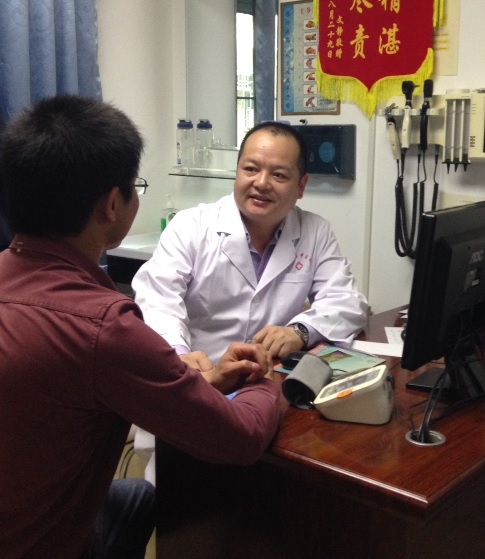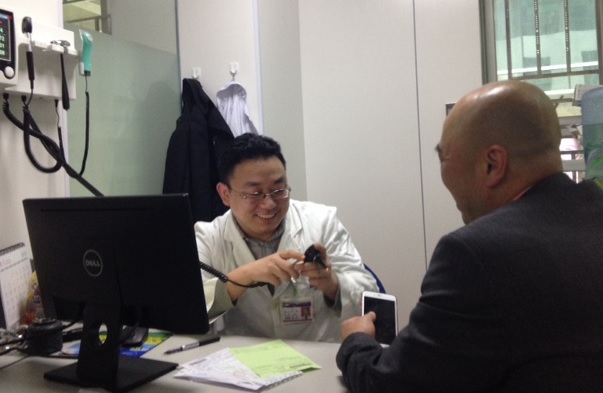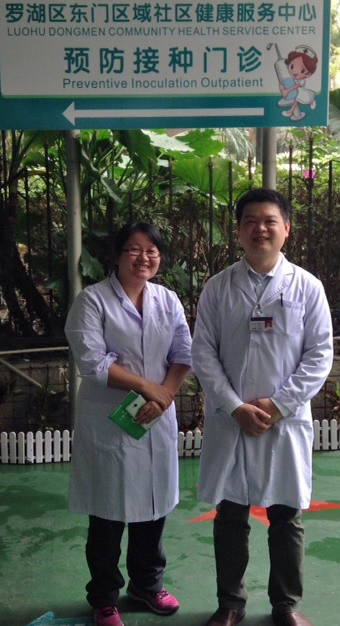From the President
Family Medicine transformation continues in China

Photo: Delegates from the People’s Republic of China, Hong Kong, Macau and Taiwan with the WONCA president and CEO in Shenzhen
español français
Dr Zhang Jianjun leads a team of family doctors at the Lian Tang Community Health Centre in the city of Shenzhen in Guangdong Province in the People’s Republic of China, situated immediately north of the Hong Kong Special Administrative Region. The health centre was founded in 1999 and provides comprehensive

primary health care services to a population of 60,000 people. It is a training site for residents in family medicine and also provides community outreach services to the aged and to those recently discharged from hospitals. The family doctors (called general practitioners in China) are at the centre of the success of the community health centre, working with teams of nurses and allied health professionals to meet the primary health care needs of the members of the local community.
Photo: Dr Zhang Jianjun, Director of the Lian Tang Community Health Centre in Shenzhen, with young GP, Dr Weng Haibing
The challenge of providing essential services to a large and rapidly expanding population, including many young families, has provided the opportunity for innovation in health care delivery. A network of community health centres, with primary care teams led by general practitioners, has been established across the metropolis.
 Photo: Family Doctor, Dr Fang Qing, with Director Huang Yongping, at the Dongmen Community Health Centre in Luohu, in Shenzhen
Photo: Family Doctor, Dr Fang Qing, with Director Huang Yongping, at the Dongmen Community Health Centre in Luohu, in Shenzhen
I was in Shenzhen to attend the 3rd annual General Practice Conference of the Cross-Straits Medical Association. The Cross-Straits Association was established in 2014 and brings together family doctors from 27 different provinces from across the People’s Republic of China, from the Hong Kong Special Administrative Region, from the Macau Special Administrative Region, and from Taiwan. Over 1500 family doctors from across the region attended the conference. The Cross-Straits Association is a wonderful example of family doctors working across political and geographic borders to support each other to deliver the best possible health care to the people of this region of the world. Led by Chinese family medicine leader, Professor Zhu Shanzhu, it also complements the wonderful work of the Chinese Society of General Practice of the Chinese Medical Association, the long-standing WONCA member organization in China.
 Photo: Professor Zhu Shanzhu, chair of the Cross-Straits Medicine Exchange Association
Photo: Professor Zhu Shanzhu, chair of the Cross-Straits Medicine Exchange Association
This was my 8th visit to the People’s Republic of China since I became WONCA president in May 2013. WONCA has a long history of supporting our colleagues in China in the development of family medicine, dating back to the work commenced in the 1980s by past WONCA president, Dr Peter Lee, from Hong Kong. WONCA recognizes the powerful impact that family medicine can have on the delivery of high quality health care to the people of the world’s most populous nation.
The conference delegates heard the announcement of the Dr Donald Li Scholarship, named in honour of one of WONCA’s most inspiring recent leaders, which will provide funding for three young practising family doctors from the People’s Republic of China to travel to Hong Kong to receive additional training opportunities in the Department of Family Medicine and Primary Care at the University of Hong Kong, and with the Hong Kong Hospital Authority.
 Photo: Dr Donald Li, WONCA Treasurer and former President of the WONCA Asia Pacific Region
Photo: Dr Donald Li, WONCA Treasurer and former President of the WONCA Asia Pacific Region
I have written before about how the Government of China has embarked on a process to transform health care delivery in China, based on the family doctor model, with the aim of training an additional 400,000 specialist general practitioners by 2020, to meet the needs of the 1.35 billion people of China, including the 800 million people living in rural areas.
The Government of China has recognized that there is substantial overuse by the population of expensive specialty care and hospital services, and that the solution is to strengthen the quality of health care provided by primary care medical providers. The Government has introduced three-year postgraduate residency training for medical graduates wishing to specialise as general practitioners, with high quality training now being offered in many centres across the country. The Government also provides “transformation training” to other medical specialists wishing to retrain as family doctors, and an extensive program of continuing medical education for existing primary care doctors wishing to upgrade their skills and improve the quality of care they provide to their patients and their communities.
This is a bold initiative which is transforming health care delivery across China, and which has the potential to impact on models of health care delivery in many other nations that look to the examples in China to find ways to strengthen primary health care and ensure universal health coverage for their own populations.
But there are many challenges, not least the challenge of gaining the trust of the local community so that people will attend the family doctors in their local community health centre, rather than go straight to a hospital or a consultant specialist. And there is still work to be done in many parts of China to ensure that family medicine is the specialty of choice for recent medical graduates, and to attract and retain family doctors to work where they are most needed, which includes many rural areas where the medical workforce is scarce and ageing. These are challenges which face many countries, but if China can meet these challenges, and find innovative solutions, there will be lessons for the rest of the world as well.

These challenges are being met in Shenzhen with innovative models of care. I visited the Dongmen Community Health Centre where 10 family doctor teams, each composed of a general practitioner, community nurse and public health doctor, work together to ensure the health and well-being of the 100,000 plus members of their local community. It was exciting to see elderly people in the community being visited at home by their family doctor teams, and the use of wearable devices, remote monitoring and telehealth to enhance health care delivery.
Photo: Staff at the Luohu Dongmen Community Health Service Centre, Shenzhen, People’s Republic of China
In the words of one of the inspiring speakers at the Cross-Straits Conference, from the Government of Shanghai, “There is no better gift to a community than the gift of better health, and nobody is as well equipped to deliver this than family doctors.”
Michael Kidd
President